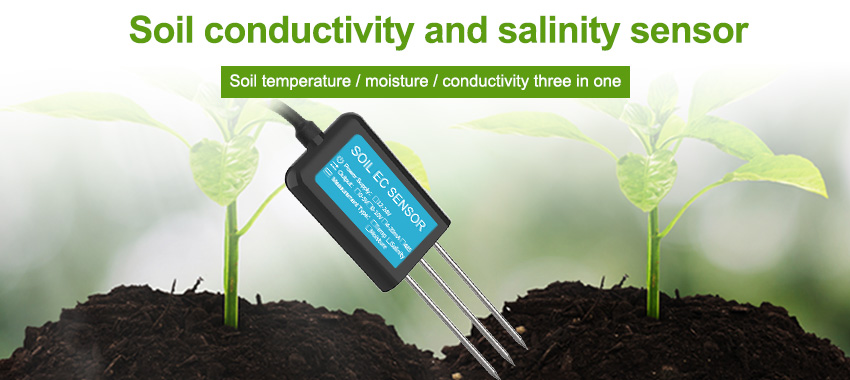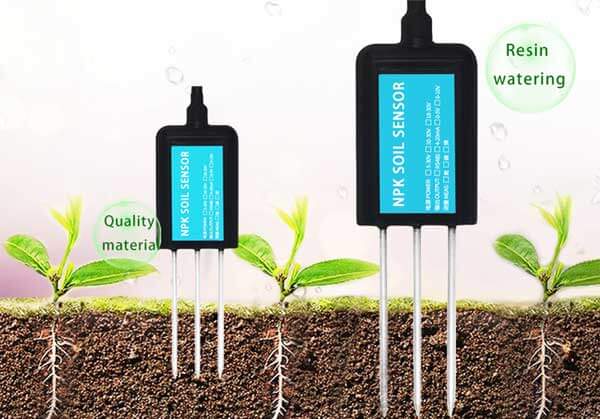Soil analysis is a fundamental aspect of modern agriculture, providing crucial information about soil quality, nutrient content, pH levels, and other factors that impact crop growth and productivity. Traditionally, soil analysis has involved cumbersome and time-consuming laboratory testing. However, recent advancements in soil sensor technology have revolutionized the way soil analysis is conducted. This article explores the latest innovations in soil sensor technology, highlighting the benefits, applications, and potential impact on farming practices.

Real-Time Monitoring and Instant Feedback:
One of the key advantages of soil sensors is their ability to provide real-time monitoring and instant feedback on soil conditions. Unlike traditional laboratory tests that often require days or weeks for results, soil sensors can provide immediate measurements of crucial parameters such as moisture levels, nutrient content, and soil pH. This enables farmers to make timely decisions regarding irrigation, fertilization, and other agronomic practices, optimizing resource allocation and ensuring optimal crop growth.
Precision Agriculture and Site-Specific Management:
Soil sensors have significantly contributed to the concept of precision agriculture, which aims to optimize resource use and minimize environmental impact. By providing accurate and localized data on soil conditions, these sensors enable site-specific management strategies. Farmers can analyze variations in soil parameters across fields and adapt their practices accordingly. This targeted approach ensures that water, fertilizers, and other inputs are applied only where they are needed, reducing costs and minimizing the potential for soil and water pollution.
Improved Nutrient Management:
Nutrient deficiency or excess in the soil can significantly impact crop growth and yield. Soil sensors play a crucial role in optimizing nutrient management by providing precise information about nutrient availability. Farmers can use this data to tailor their fertilizer application rates and schedules, ensuring that crops receive the right nutrients at the right time. This not only improves crop health but also reduces unnecessary fertilizer use, minimizing environmental impact and agricultural runoff.
Water Conservation and Irrigation Efficiency:
Water scarcity is a growing concern in many regions globally, making efficient water use a top priority for farmers. Soil sensors help enhance water conservation and irrigation efficiency by providing accurate information on soil moisture levels. Farmers can make informed decisions about when and how much to irrigate, avoiding both under- and over-irrigation. This reduces water waste, conserves resources, and promotes sustainable farming practices.
Remote Monitoring and Decision Support Systems:
Advancements in connectivity and technology have enabled the integration of soil sensors with remote monitoring and decision support systems. Data collected from soil sensors can be transmitted wirelessly to cloud-based platforms, allowing farmers to access critical information from any location. Decision support systems analyze the data and provide actionable insights, helping farmers make informed decisions regarding irrigation, fertilization, and overall crop management. This real-time monitoring and analysis enable proactive measures to optimize crop growth and productivity.
Emerging Sensor Technologies:
In addition to traditional soil sensors that measure moisture, pH, and nutrients, there are several emerging sensor technologies that offer new possibilities for soil analysis. For example, spectral sensors measure the reflectance of different wavelengths of light to determine soil properties such as organic matter content and texture. Electrochemical sensors can detect soil contaminants and pollutants, aiding in environmental monitoring and remediation efforts. The integration of multiple sensor technologies provides a holistic understanding of soil conditions, enabling comprehensive analysis and improved decision-making.

Conclusion:
Advancements in soil sensor technology have revolutionized soil analysis, bringing numerous benefits to modern agriculture. Real-time monitoring, precision agriculture, improved nutrient management, and water conservation are just a few of the advantages offered by soil sensors. The integration of these sensors with advanced data analytics and decision support systems further enhances their potential impact on farming practices. As soil sensors continue to evolve, farmers will have access to more accurate and comprehensive soil information, enabling them to make data-driven decisions that maximize crop growth, productivity, and sustainability. The revolution in soil analysis brought about by soil sensor technology paves the way for a more efficient, environmentally friendly, and productive agricultural future.
